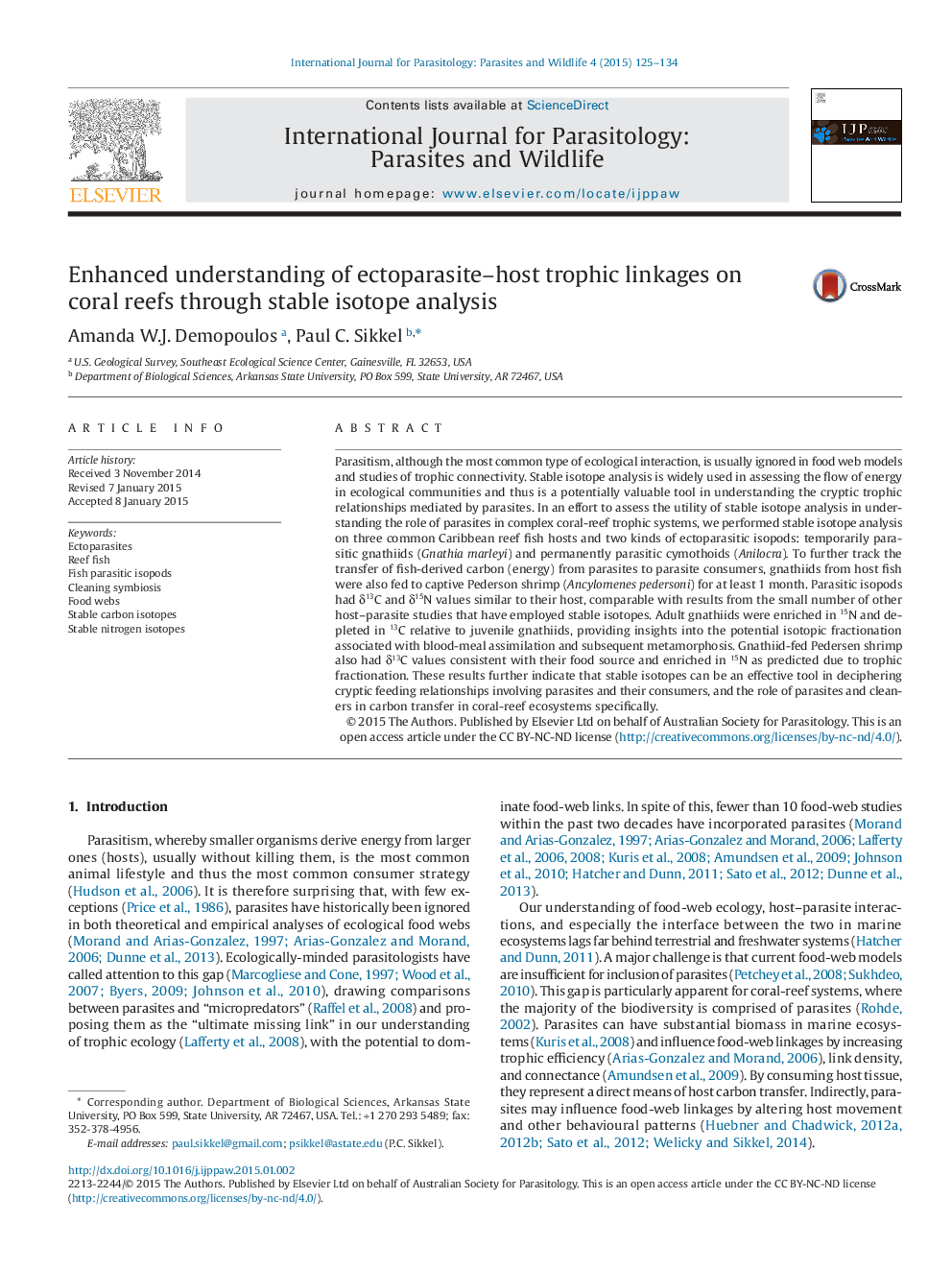| کد مقاله | کد نشریه | سال انتشار | مقاله انگلیسی | نسخه تمام متن |
|---|---|---|---|---|
| 2055176 | 1075732 | 2015 | 10 صفحه PDF | دانلود رایگان |

• Parasitic larval gnathiid isopods had δ13C and δ15N values similar to their host.
• Values were more similar to host heart and blood tissue than host muscle tissue.
• Adult gnathiids were enriched in 15N and depleted in 13C relative to larval stages.
• Anilocra isopods δ13C and δ15N values depended on their specific fish host.
• Gnathiid-fed cleaner shrimp were enriched in 15N relative to their food source.
Parasitism, although the most common type of ecological interaction, is usually ignored in food web models and studies of trophic connectivity. Stable isotope analysis is widely used in assessing the flow of energy in ecological communities and thus is a potentially valuable tool in understanding the cryptic trophic relationships mediated by parasites. In an effort to assess the utility of stable isotope analysis in understanding the role of parasites in complex coral-reef trophic systems, we performed stable isotope analysis on three common Caribbean reef fish hosts and two kinds of ectoparasitic isopods: temporarily parasitic gnathiids (Gnathia marleyi) and permanently parasitic cymothoids (Anilocra). To further track the transfer of fish-derived carbon (energy) from parasites to parasite consumers, gnathiids from host fish were also fed to captive Pederson shrimp (Ancylomenes pedersoni) for at least 1 month. Parasitic isopods had δ13C and δ15N values similar to their host, comparable with results from the small number of other host–parasite studies that have employed stable isotopes. Adult gnathiids were enriched in 15N and depleted in 13C relative to juvenile gnathiids, providing insights into the potential isotopic fractionation associated with blood-meal assimilation and subsequent metamorphosis. Gnathiid-fed Pedersen shrimp also had δ13C values consistent with their food source and enriched in 15N as predicted due to trophic fractionation. These results further indicate that stable isotopes can be an effective tool in deciphering cryptic feeding relationships involving parasites and their consumers, and the role of parasites and cleaners in carbon transfer in coral-reef ecosystems specifically.
Graphical AbstractFigure optionsDownload as PowerPoint slide
Journal: International Journal for Parasitology: Parasites and Wildlife - Volume 4, Issue 1, April 2015, Pages 125–134